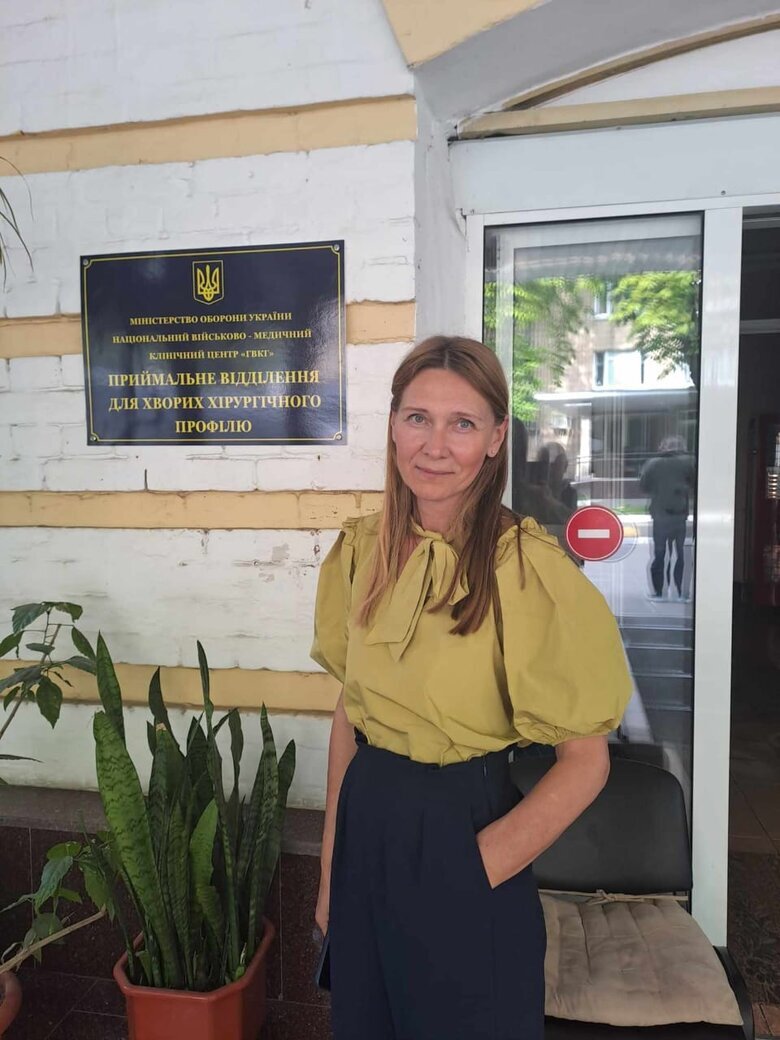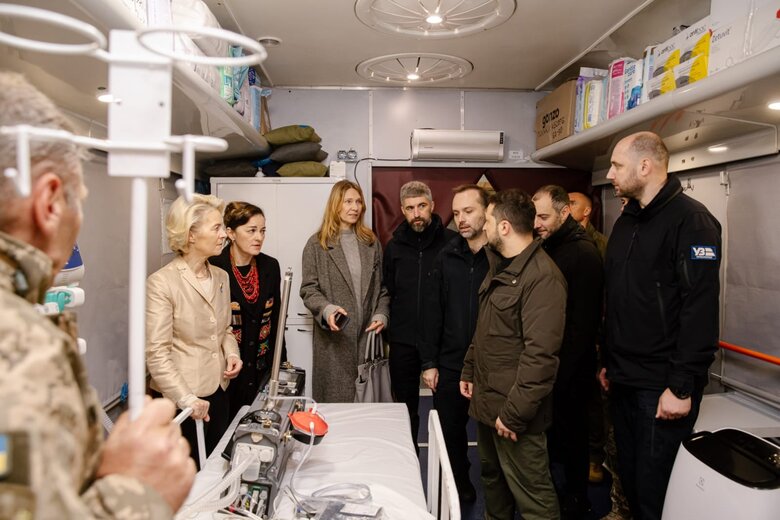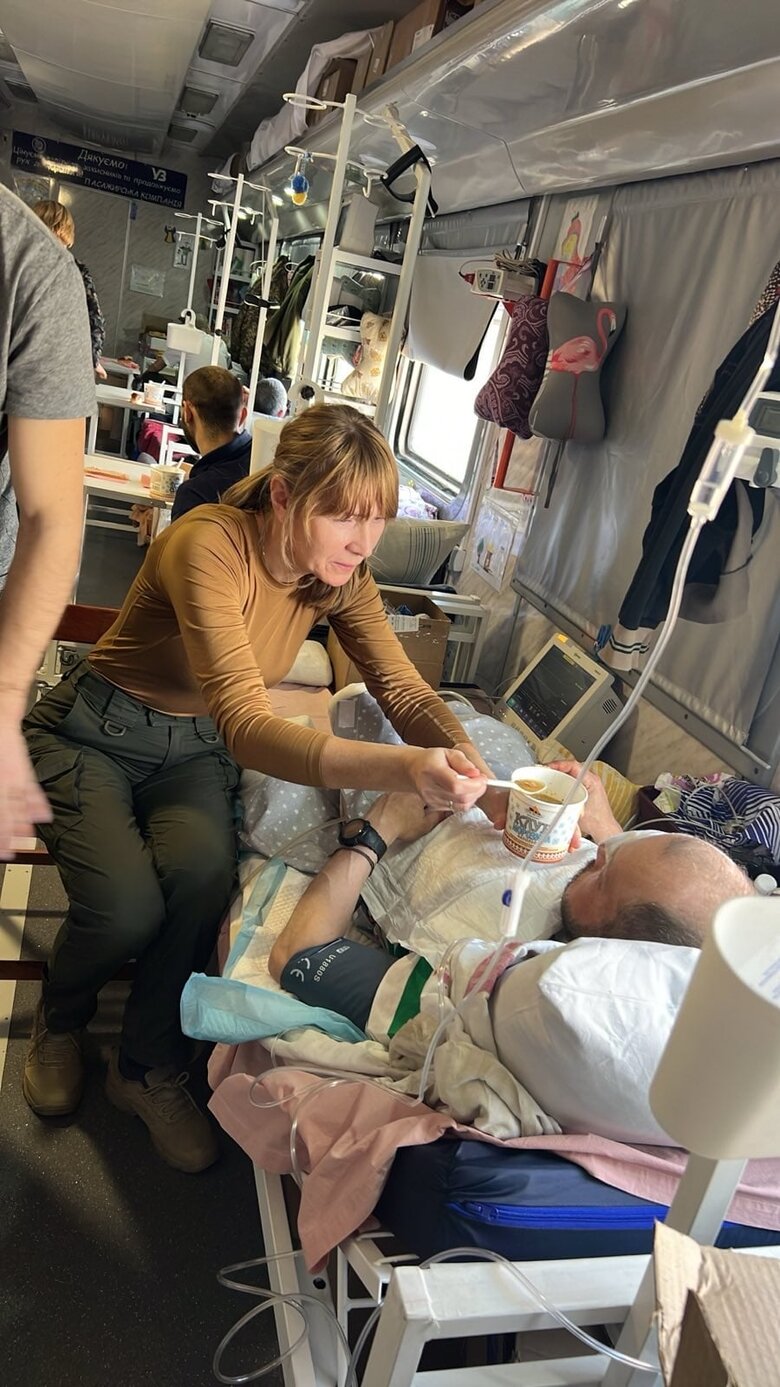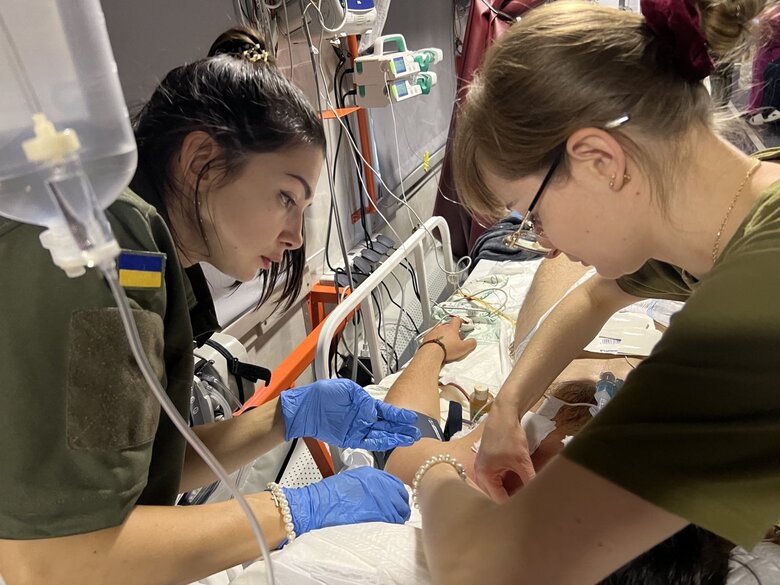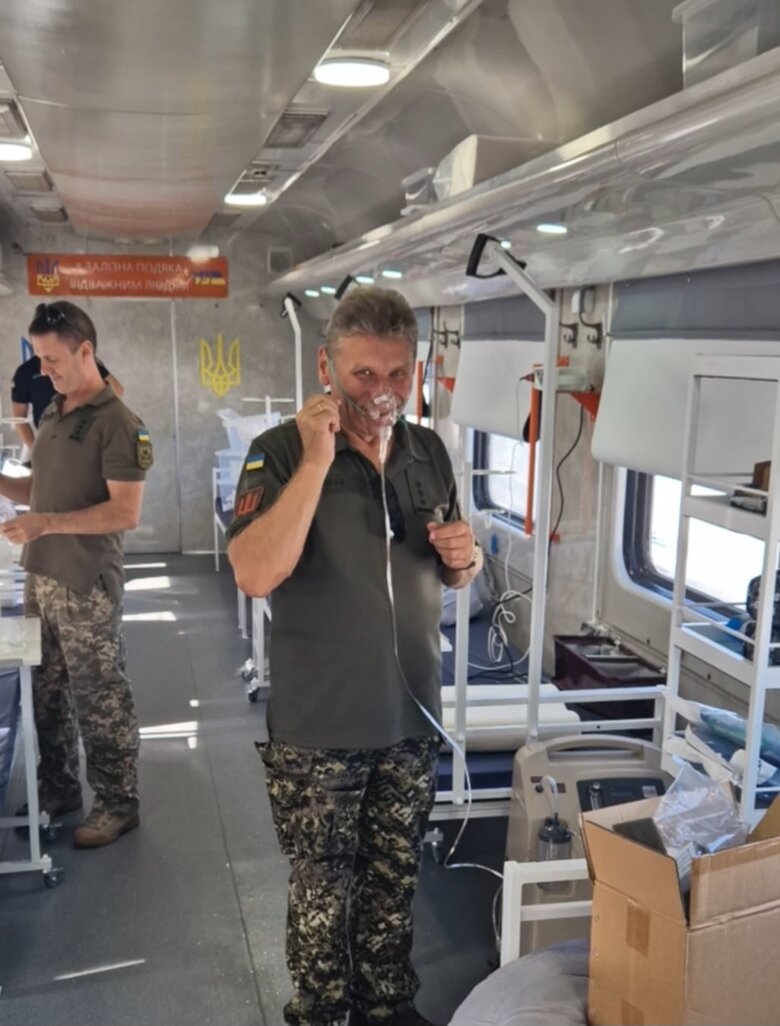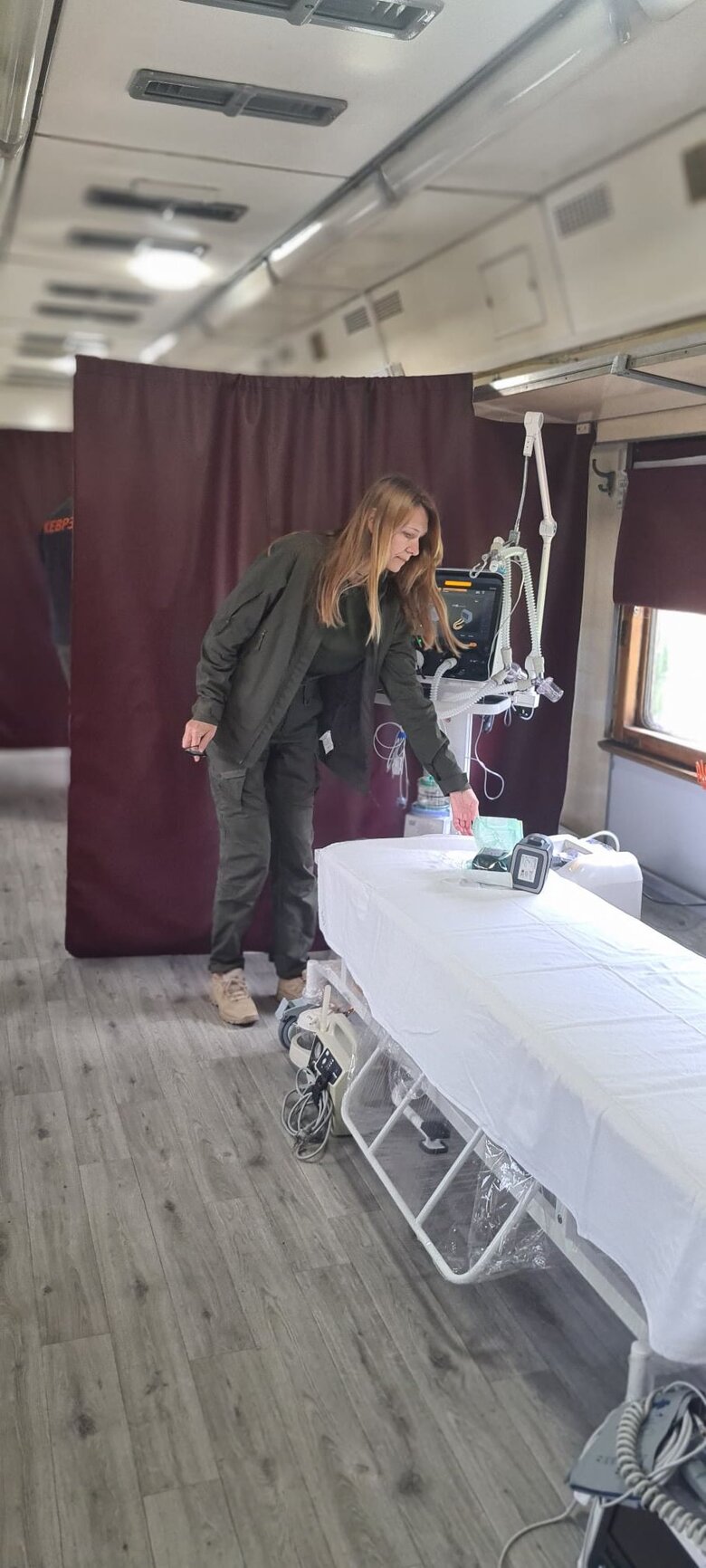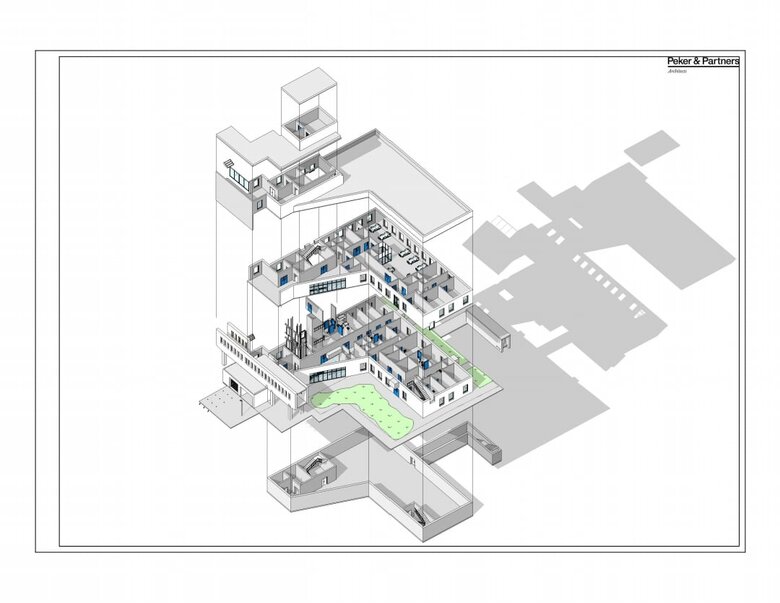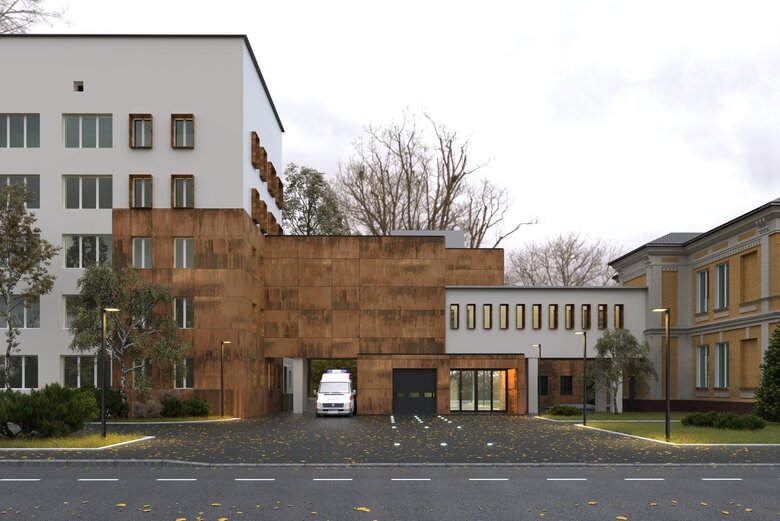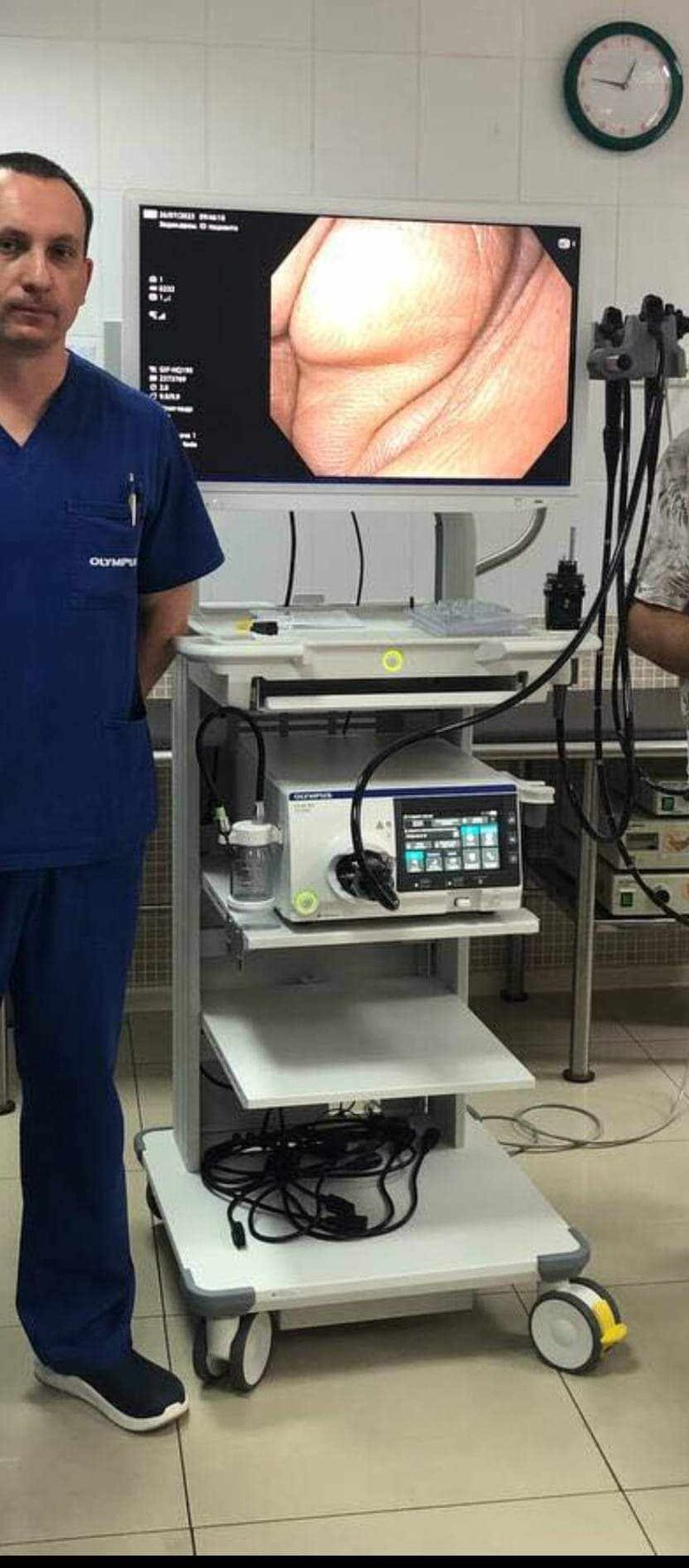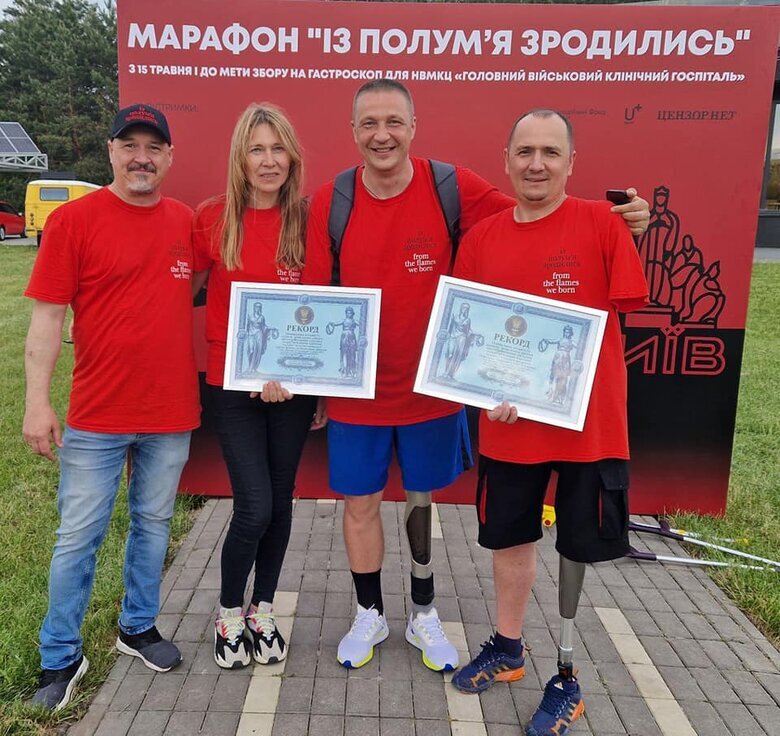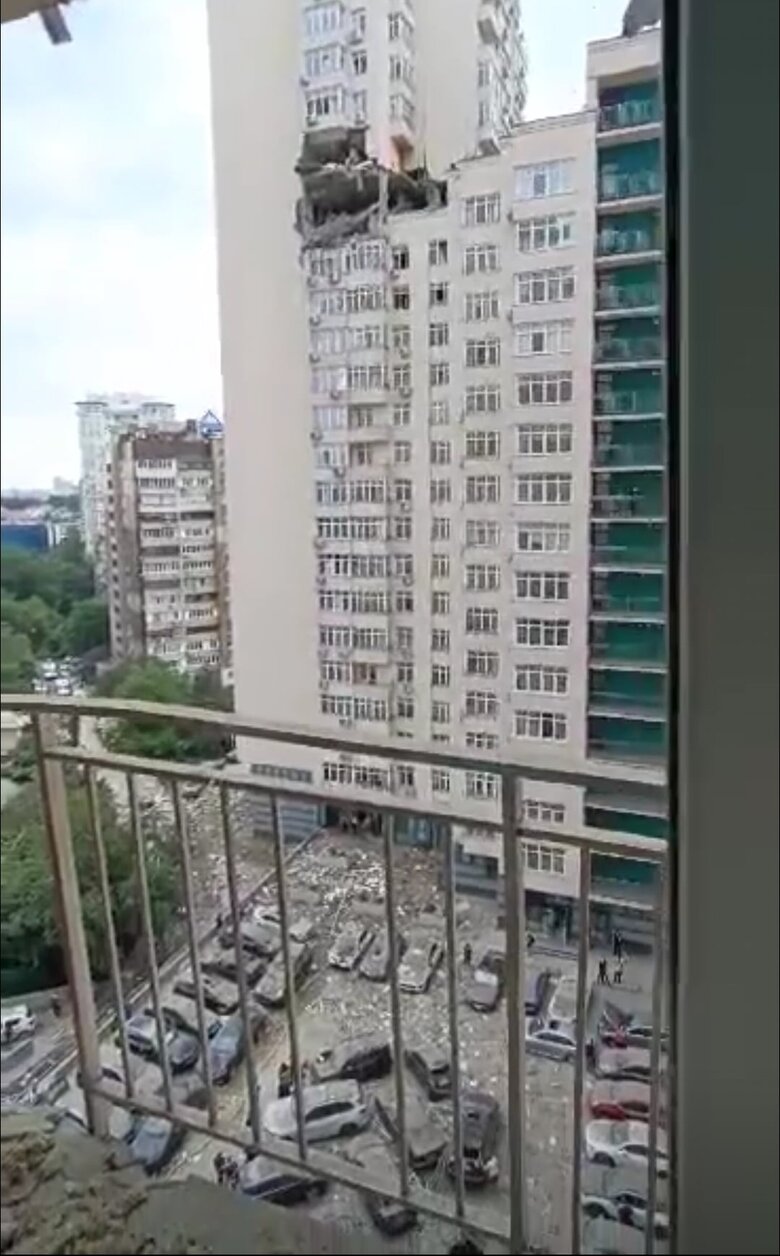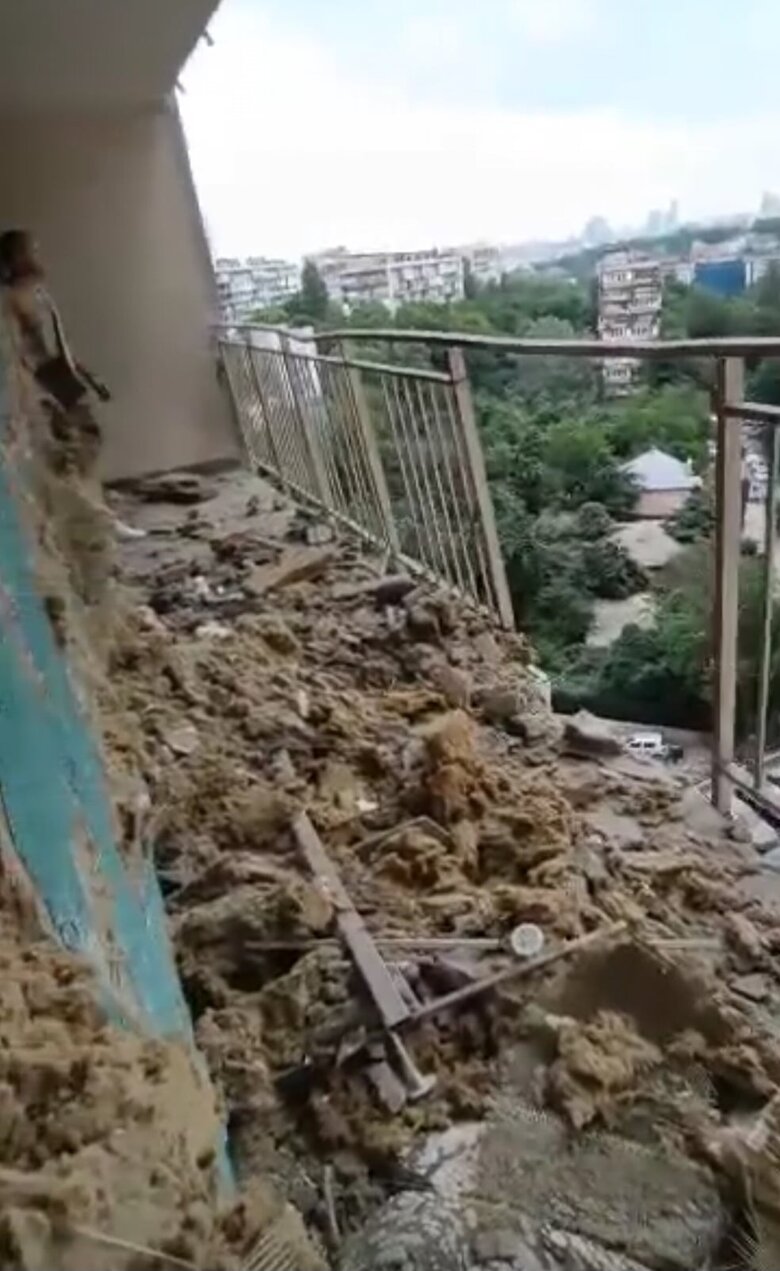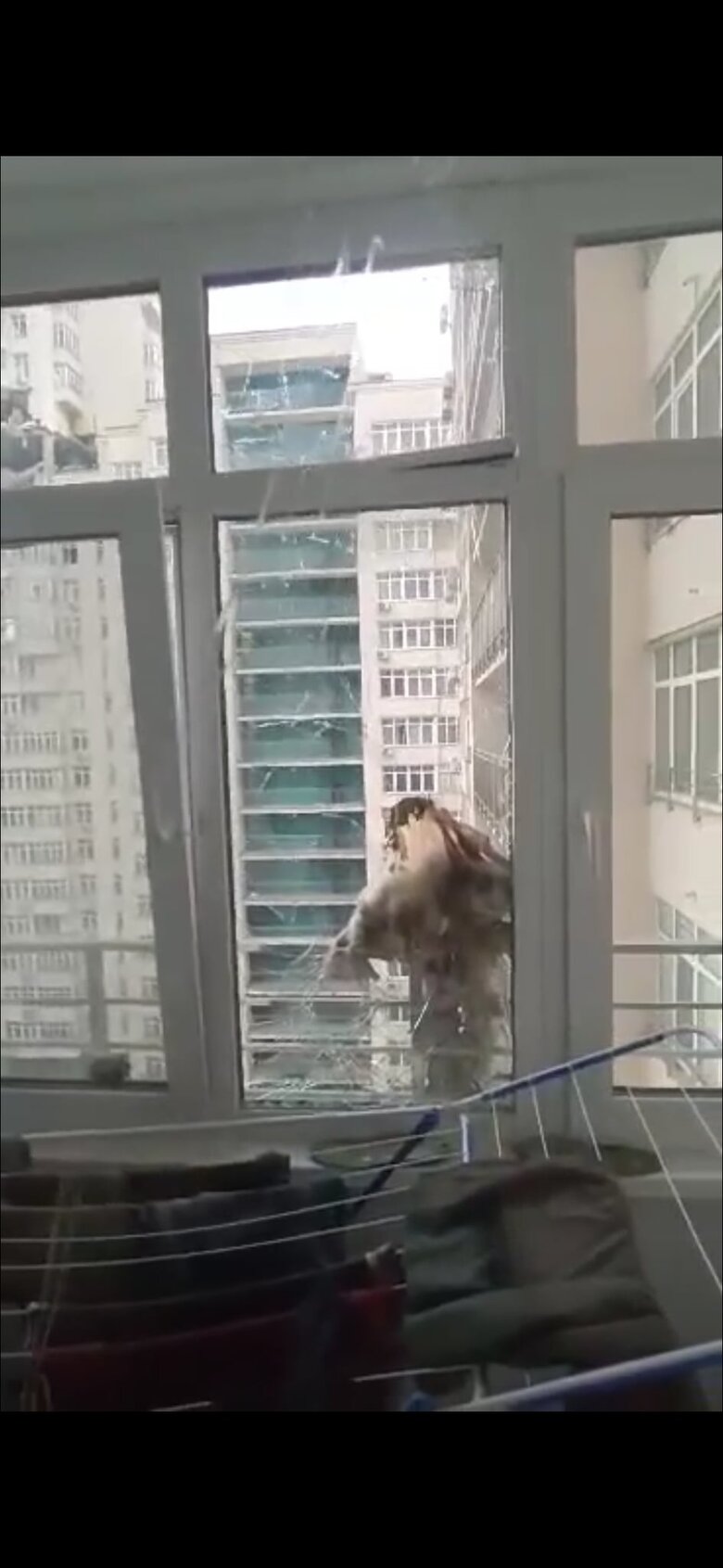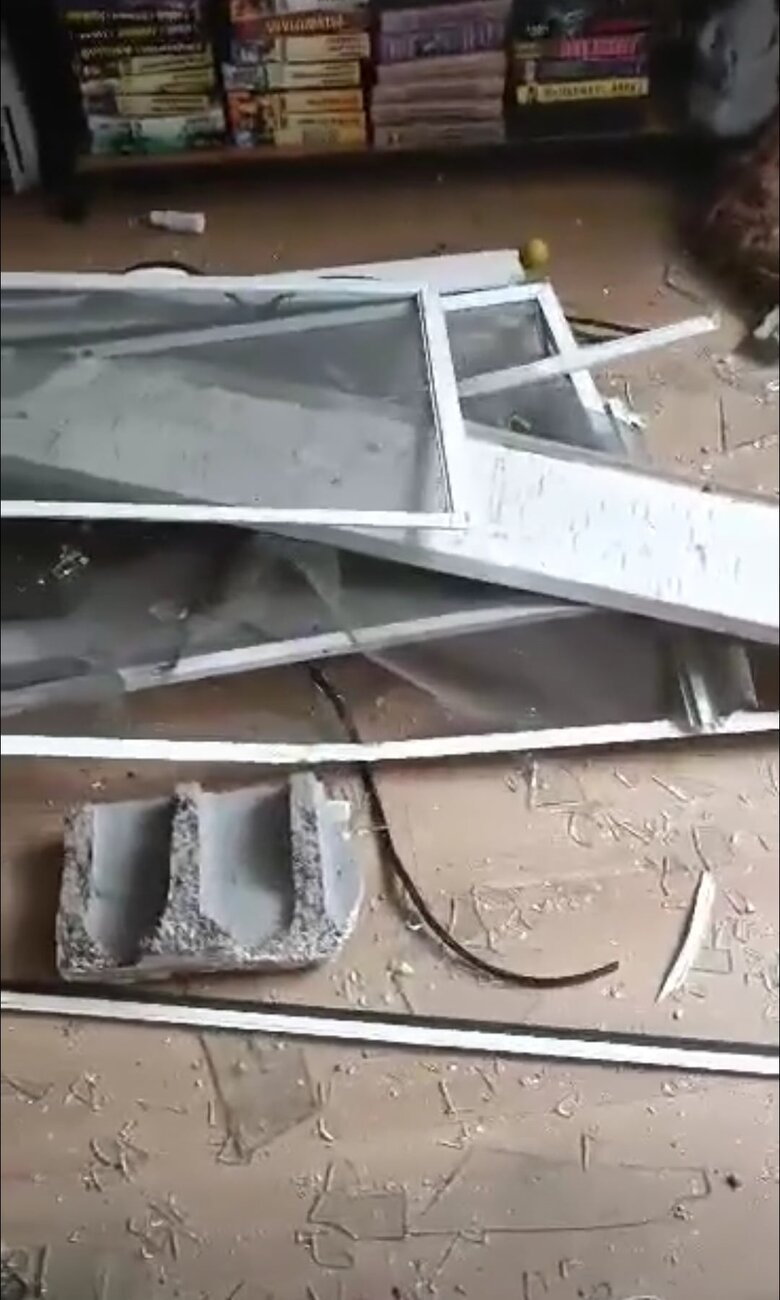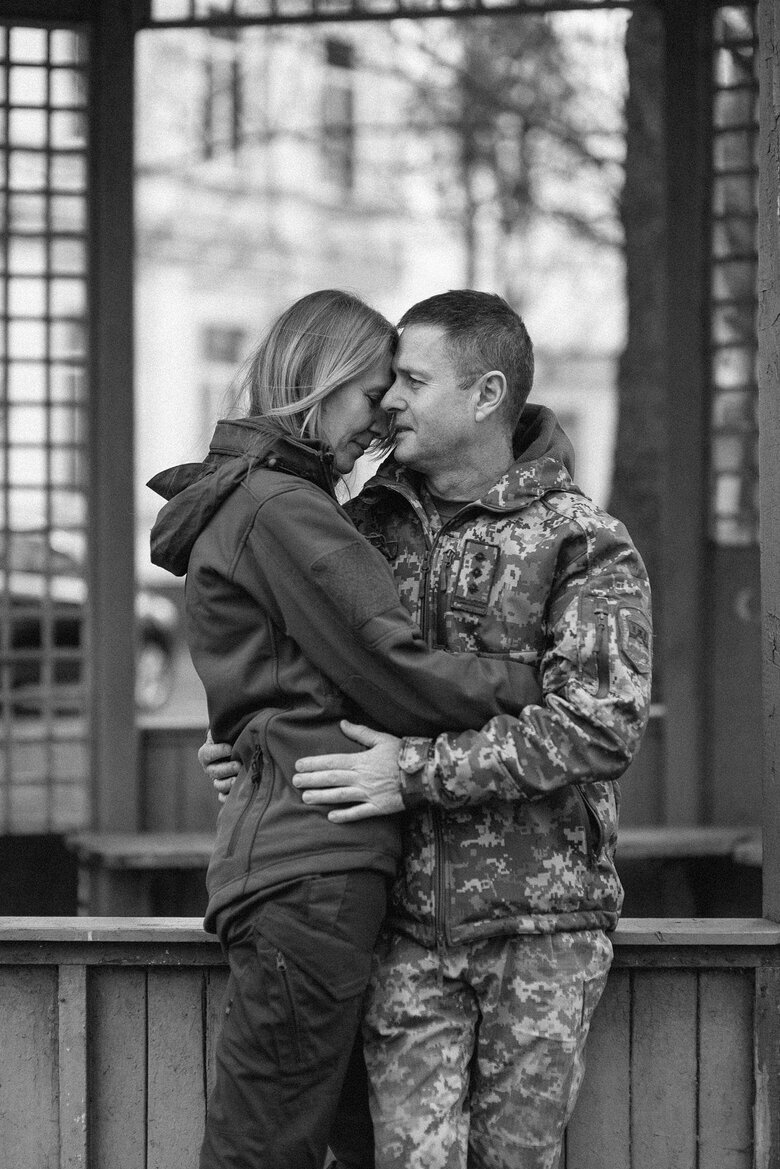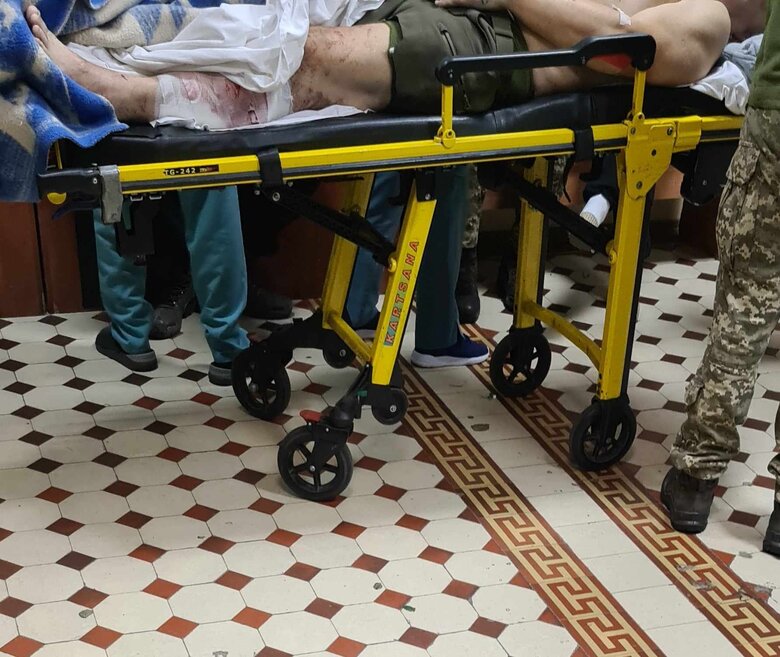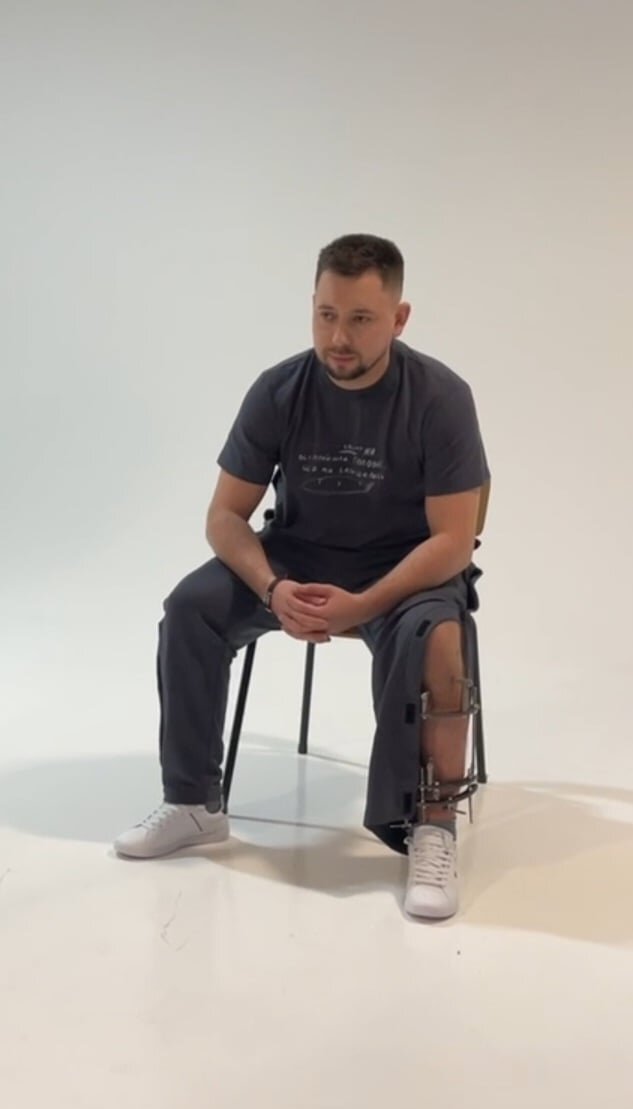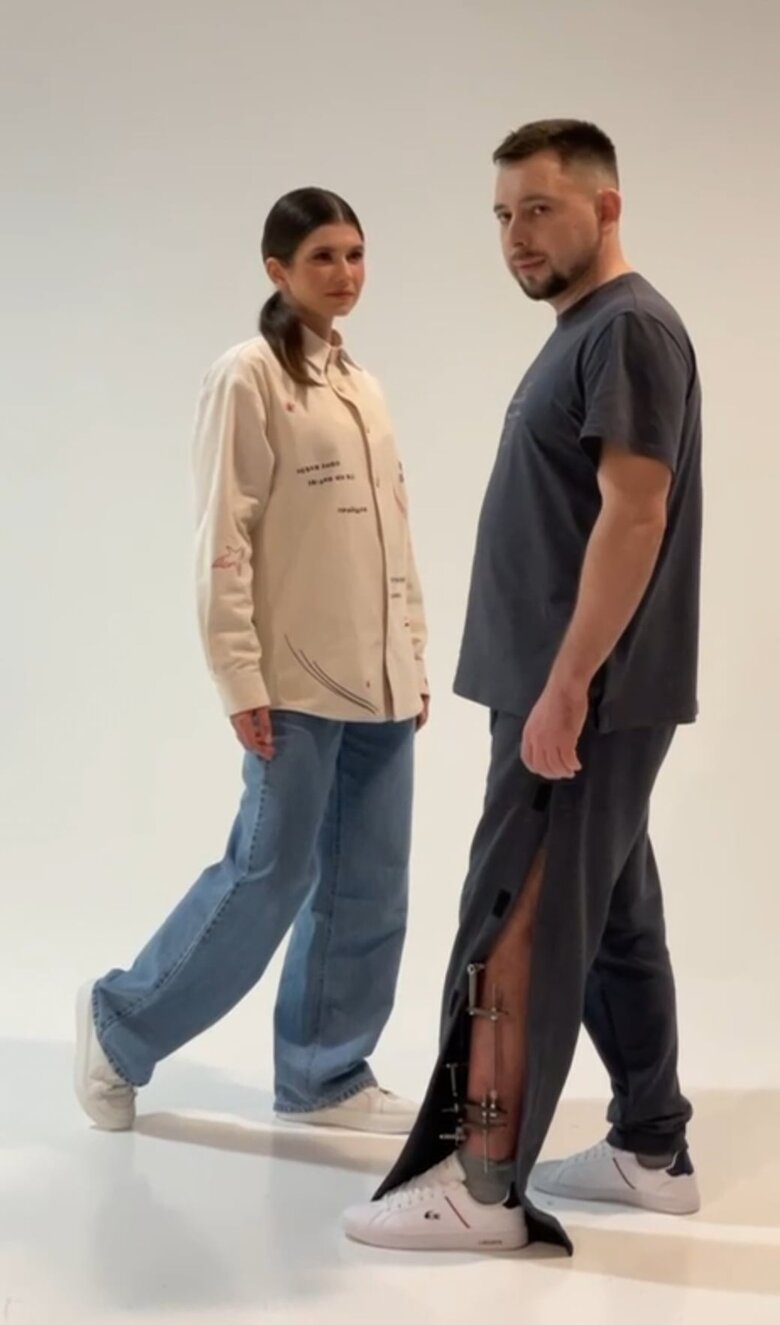From frontline to hospital. How Ukraine is learning to truly care for its wounded
One of the greats said: "The maturity of a country at war is measured by the extent to which it cares for its wounded." If this is true, Ukraine is now on the path to that maturity.
At a heavy cost, under enemy pressure, overcoming bureaucracy, corruption and resistance to bitter clingers, the country is gradually developing a modern military medicine system.
One of those who has already made a significant contribution to this process is volunteer Iryna Soloshenko. Thanks to her (or with her substantial help), several projects important for Ukrainian military medicine have emerged and are successfully operating. First, these are special carriages for evacuating the wounded by rail. Secondly, the clearance of the area for redevelopment of the reception department of the Main Military Clinical Hospital. Thirdly, Iryna has recently joined an extremely important initiative to create a line of adaptive clothing for the wounded under the auspices of the Ministry of Defence.
At the request of Censor.NET, Iryna Soloshenko spoke about the details of the formation and implementation of these projects.
- Let's start with the evacuation train. You forbade me to write about it for a long time. And you kept silent yourself, although I understand that you really wanted to tell me about it. So why was the information about the evacuation train for the wounded classified?
- I'll correct you right away: not a train, but a carriage. As for why everything was kept secret... Firstly, there was an agreement with the medical forces command that we would not talk about it because of the security situation. But as soon as the President brought Ursula von der Leyen there and showed her, and it became public, Ukrzaliznytsia - and I understand them for my part - began to ask: let's show something.
We do not show where we transport the wounded from and to. We don't invite journalists to the evacuation stage (although they ask for it). Yes, you can make very good stories with us. But then we will show the place where the evacuation begins and where it ends.
- ...and when, God forbid, Russian missiles hit there, it will not be journalists who will be the ones to hold the bag.
- Actually, yes. Every medic in our evacuation carriages will be holding the bag...
Why do I say "carriages"? Because, in principle, this is not a daily train. This is an opportunity to collect carriages in the right quantity, in the right nomenclature and in the right direction. There is a medical-military-railroad headquarters that coordinates all issues; military medics say how much is needed and where it comes from. And together with the Ukrzaliznytsia, all this is being formed.
- I'm going to deliberately make a fool of myself and ask a stupid question. Why the emphasis on the railway? It would seem that there are evacuation vehicles, and that's enough...
-(With sarcasm) Yeah, that's enough, of course. We have enough doctors, enough roads... No, it doesn't work that way, because you need to transport a large number of wounded people from one medical facility to another at the same time. Institutions that are medical hubs cannot collect the wounded. They must transfer them during the evacuation phase. Again, this is a security issue. And this is the main thing. Before the full-scale war, large air ambulances were used for this purpose. And since the skies are, of course, closed in such a big war, it is impossible to transport by air. And Ukrzaliznytsia came to the rescue back in March of 2022. They cut out a "side berth" so that wheelchairs with a wounded man could enter the carriage; they made access ramps so that, again, wheelchairs could be brought in instead of being carried in.
And this evacuation began. But it was difficult. You can imagine the economy class compartments, right? They are small, narrow, and the beds are not adapted to accommodate wounded people with amputations, severe injuries...
- Did you use any Western analogs of such carriages as a sample? Or are our economy class compartments so specific that you had to do your own design?
- Médecins Sans Frontières made their own medical train. They had a medical train, where all the carriages were coupled together, and they existed only in a link-up. They have a separate generator carriage, in which they put a high-power generator, a separate oxygen carriage...
But in our case, it is inefficient, inconvenient and dangerous. As the front line is very long. And the medical hubs that collect the wounded are scattered over a large area.
- In addition, a single evacuation train, if it has already been identified, is too visible a target.
- Yes, if it becomes visible and the enemy understands that it is he who is coming and taking the wounded, then this is not an option. Besides, you never know how many people will be requested to evacuate this time - dozens or hundreds of wounded...
- Who designed what should be in the evacuation carriage?
- It was a collaborative work. It all started in April 2022. When I saw the evacuation, I asked my friends to provide me with contacts for Ukrzaliznytsia. They gave me several contacts. I wrote a preparatory text and simply copied and sent it to all the executives of Ukrzaliznytsia, telling them what I wanted them to do. Oleksandr Kamyshin, who was then the head of Ukrzaliznytsia, responded immediately. He got in touch with me and asked: 'Who are you? - There was a second pause. He asked, "Does the medical forces command know that you are going to modify carriages?" "Yes." "Good, we'll meet on Monday.
I hung up the phone and turned to my husband, the head of the reception department of the Main Clinical Military Hospital.
- In other words, a triumvirate has emerged...
- Yes, Ukrzaliznytsia, the Medical Forces Command, and me as the initiator and representative of the Kolo Charitable Foundation (for today).
I met with the Medical Forces Command on Sunday. I explained what I wanted. They asked me: "Will you do it?" - Of course I will. (I have been doing it for two years). And that was it, the commander said: do it. On Monday, we met at a big meeting. A representative of the Medical Forces Command arrived, an officer with whom we have had a complete understanding for the past two years. And I asked our Сhief Фnaesthetist of the Armed Forces of Ukraine, Oleksandr Buhai, to come to the meeting, and we'll flagitate the carriage.
Buhai did not believe that it was possible to change this, to make the evacuation convenient. But at a meeting, we were given a carriage. It was physically delivered a day later. We brought a wheelchair to it. Oleksandr Oleksandrovych said it was comfortable. Now we will put it on, to see what to do.
- It's clear that evacuation carriages are not just ordinary carriages with beds in them, and wounded people lying in the beds. You wanted everything in these carriages to be super-top. So what exactly did you want? The obvious things: how much space for each wounded person? What is the temperature in the carriage? What kind of equipment and staff? What should be in such a carriage in general?
- This is precisely the question of why we are talking about carriages and not a train. There are two types of them. The first is an intensive care unit. And it is important to understand that this is not about transporting the wounded, but about a continuous stage of evacuation, which includes treatment of the wounded. Because we cannot just transport a seriously wounded person for 10-12 hours.
- That is, we continue treatment, but now it is in this carriage.
- Now it is in the carriage. So, the intensive care unit can accommodate 5 wounded. These are 5 autonomous places, like in an intensive care unit. It has absolutely everything.
- And the second type of carriage?
- The second type - for lighter wounded - has 10 seats. They are located on both sides of the carriage. There are completely different beds and a different approach. The intensive care wounded need an anaesthetist, a nurse and must be under the care of doctors 24/7.
- And obviously, there should be more equipment.
- Of course, these are lung ventilators, oxygen concentrators, absorbers, infusion pumps. These are all things that are available in intensive care.
And in the carriage for 10 wounded, there was the appropriate medical staff. Nurses, medics. There are more of them because there are more wounded.
Speaking of the temperature in the carriage. This is very important because Ukrzaliznytsia's carriages are not newly built. They are reconstructed old ones. You understand that during the war, Ukrzaliznytsia performed the largest logistics function in this country. And there are no more carriages. So, in principle, carriages are being searched for. They are being transferred. And sometimes they have no power supply. Why do we provide each carriage with a generator and an uninterrupted power supply? The reason is that there is medical equipment and air conditioning in the carriages, which help to make their stay there comfortable. In summer, the temperature is lowered, and in winter, if it is not enough, it is additionally heated. Therefore, all this is a completely vicious story. And this independence was tested by the blackouts of 2022. Back then, in the fall, we went through the blackouts with the railroad carriages, when everything was massively shelled at once. We lost mobile communication and power. And the trains with the cars were in the field. And then there were such unpleasant moments when our anesthesiologists were looking for AMBU bags to manually pump their wounded who were on artificial lung ventilation.
- Recently, there were three attacks on railway tracks in almost a day. Did you become concerned at the time? I mean the prospect of constant attacks on the railways.
- The railway has been hit since the beginning of the great war. At least at the main terminals. Because logistics centres are not stupid either, they have almost all their logistics by rail.
That's why we've become concerned since the very beginning.
- I remember the photos that you sent me month after month, making me swear not to publish them. What was the hardest part of this project for you?
- You know, I am always trying to reach an agreement with the state, to find understanding and feedback. I found it here.
- Do you have an approximate understanding of the finances, what part of these carriages was made, what percentage of donations were from people, not the state?
- We had a major donor in this project from the KOLO Charitable Foundation. He wanted to be non-public. But it was a foreign donor who donated 200 thousand euros. And, in fact, most of the medical equipment has been purchased since last summer thanks to this donor.
But for the last carriages we are making now, we bought the same generators at the expense of the collection, at the expense of joint funds. So I'm very grateful to everyone who supported us in this collection! You are helping to save lives!
- What else does this project need money for? At the end of the interview, we will provide the necessary data for people who want to donate.
- Today, our main problem is generators that have been in operation for two years. We want to make a mark on some generators, send them back to the manufacturer and show them how long they have worked. With a lifespan of 400 hours, it has worked 510 hours! This means that the generators will fail. We have a few items that we keep as spares, also in the centres where we make up trains. But they may not be enough. When summer comes, the generators are under a very heavy load. They ensure a comfortable temperature and the operation of medical devices.
- I would like to note to our readers that your help in purchasing generators will be so welcomed. After all, we see the enemy's attacks on our energy hubs. We already understand that it will be very difficult in winter. What will this lead to? In autumn and winter, everyone will be looking for generators. And here we need them right now. And it is very important to take care of this right now. Therefore, dear readers, your money will be spent specifically on generators for this project.
- Yes, it is important because the lives of the wounded, their comfort and normal transportation conditions will depend on the generators.
- I can't help but ask about this. I noticed that when the state finally made presentations of these carriages, at the ceremony, top officials from government agencies casually put on Iryna Soloshenko the back burner in terms of recognition. What was it like for you to see this after many months of working on this project?
- It's a complicated question. It's a little bit strange and unclear in a humane way that institutions find it so difficult to recognize the role of a person. It's hard to admit that at the beginning of a major war, in an atmosphere of confusion, one individual could not only come up with something like this but also look for all this equipment and offer options. After all, we first made mobile intensive care carriages. And then it became clear that we also needed to transport lighter wounded, but in a comfortable way. That's why our "tens" have started up - carriages for 10 wounded.
- And so, at the presentation, all these officials are actively speaking, while you stand on the sidelines and just nod your head. Even though everyone in the room knows that you were the main driving force behind the project. How does it feel?
- I say it, in a humane way, it's strange. Did I prepare for it mentally? Yes, of course I did. What's important to me is that the wounded who use our carriages realize that they are taken care of. They got there alive. For obvious reasons, I can't tell you the exact number of people transported. But a huge amount of work was done by all of us together. I emphasize: all together. This includes my colleagues from the KOLO Charitable Foundation. And railway crews. Behind these carriages is the work and desire to carry out some changes of dozens of people, ordinary workers, whom I met on the carriages and whom I respect very, very much because I see them working at night, working irregular hours, and tears in their eyes when we hand over the carriages. Because some of them have relatives at war, some have friends, some have been killed or wounded. From time to time, we meet those Ukrzaliznytsia employees who have been mobilized as patients...
To conclude my answer to your question, I will say this: we have not yet won. As for the rest, well, I haven't discovered anything new in people.
- Iryna, you don't waste time on trifles in your work, so let me ask you about your main project over the years - the reception department of the main military clinical hospital. Together with like-minded people, you decided to turn a standard post-Soviet department into a world-class project where the wounded would be admitted promptly, treated effectively and with maximum comfort.
For a year and a half - I'm not talking figuratively, but literally - you have lived in this ward. You were helped by a bunch of like-minded people, friends and friends of friends to raise money for equipment; you organized a bunch of individual projects - from extreme marathons with amputations to a unique art book about war heroes. I could go on, but this is an interview, not an essay. So the question is: at what stage is this project now? A year ago, when we spoke to you, it was moving from the stage of purchasing equipment, which you were involved in, to the final stage. And now, how are things going?
- I'll start from the end. The equipment that we fundraised for with the help of the art book - which is almost 19 million - is working.
- And these are exclusively donations from people.
- People's money plus a donation from one large manufacturer, Olympus, which closed the largest collection. They provided us with an endoscopic stand for 11.5 million, and 9.5 million worth of free equipment.
And we raised 3 million 600 thousand with the help of veterans Oleksandr Shevtsov and Serhii Khrapko and their Marathon "From the Flame We Were Born", which took place last May.
- It must have been one of the happiest days of your life, mustn`t it?
- Yes, indeed. However, on the other hand, although it sounds pretentious and beautiful, we just decided to do the right thing, to complete the department, without which a medical facility should not operate at all. Without an emergency department, modern medical facilities do not work at all.
- I take it that there is also a dangerous possibility that the state may provide equipment, but not of the quality you imagined?
- And here stop. We were only the initiators and collected the medical equipment. And not all of it. We don't have an X-ray machine there, and I have to assume that it will be provided by the state or some large donor. Because you can see for yourself how fundraising is now. It is objectively difficult.
- In the sense that people's wallets are getting emptier...
- Someone's wallet is getting empty, and someone thinks that we only live once, tomorrow may come, so I will enjoy my life. Everyone thinks something different. The longer the war goes on, the worse the state of the economy and everything else. I understand all this too.
I'll return to the charge to the reception area project - when this idea came up a year and a half ago, Mariia Burmaka donated more than 100 thousand from her charity concert, and the KOLO Charitable Foundation paid for a preliminary design to architect Pavlo Pekar, who developed a sketch according to the specifications of the doctors working at the hospital. We involved the chief surgeon in assigning the medical task.
A lot of preparatory work has been done. As part of this, the National Military Medical Clinical Centre, the Main Military Clinical Hospital, received an official land allocation. Geological and geodetic surveys. Approval of the Ministry of Culture... I can go on for a long time.
- In other words, you have fulfilled your part of the promises - in terms of equipment and transfer of best practices - and you have kept them. But what about the reconstruction and construction undertaken by the state?
- At the moment, the Ministry of Defence is absolutely 100% involved. We meet once a week and move forward.
- Were there any deadlines? Were you promised that everything would be ready right then and there?
- I was often promised different things in this project by different government agencies. And the Recovery Agency was involved. Everyone is involved in this process, starting with the Cabinet of Ministers, Mr. Kubrakov, with whom we used to make evacuation carriages. I am grateful to everyone who was involved at different stages.
- But things are going slower than expected.
- And it's slower. And some officials allowed themselves to say at some meetings: "This is your private project." (Sarcastically smiles. - Ye.K.). To be honest, my eyes were glazed over. I said I didn't know I was going to build a three-storey villa in the main hospital...
- By the way, have you tried to slander this topic with any publications?
- No, thank God. And what can be slandered here when there is a clear amount. If we look at the reconstruction of two hospitals in Kyiv, the Veterans Hospital, which is worth billions of hryvnias, and our project, which is less than 200 million hryvnias, can always be calculated. Plus, we need to understand that there must be a shelter there. We are obliged to build it, according to the new standards, because without it, any construction is now impossible. There are two floors and an elevator. By the way, we will cover the need for the neighboring traumatology unit, which is located on the second floor of a historic building and has no elevator. We will cover the need for an elevator.
- You know, Iryna, when you were still living with the man who heads this department around the clock in a small room in the ward itself, I noticed your human response but the mega-tense reaction to the missile attacks on Kyiv. Only then did it dawn on me that you were not worried about yourself, but about the hospital. Because you can imagine better than anyone else: what if it hits there...
- Well, this is a difficult question again. It has a bit of family experience in it. Because last summer, a missile hit my daughter's house in Solomianka. She is an IT specialist and works at night. And just a short time later, she went to the bedroom. And the bedroom is on the other side of the apartment. If she had been in her office at that time, who knows what would have happened. I often remember that night. How I watched the streams. And then for the first 15-20 minutes, I had no connection with my daughter. You understand that in those 15 minutes, I managed to think of...
- I do understand, and I will not be able to fully understand, because until you experience it yourself, you will not feel it.
Let's go back to the hospital's emergency department. According to your plans, how many wounded patients should it receive?
- Not only the wounded. The injured or the sick. We are planning to have an inclusive, comfortable and modern Reception Department with the best equipment on the 1st floor. On the second floor, there will be an emergency department for daily patients` arrivals.
Again, the numbers of military personnel during the war are not public.
And by the way, my husband is no longer the head of the reception. As a dermatologist with 30 years of experience, he headed the restored Dermatology Clinic.
- Can we say that you met and got married when you, Irina, were already working in the reception department?
- Yes, we met at the hospital on the steps of the admission department in 2014. So everything we did was connected with the emergency department.
And on 24 February 22, when I came to the hospital in the evening, we said goodbye to each other and said that we had lived a good life
- This is how it was perceived at the time.
- Especially in the hospital - because I saw how few people there were, how few of us there were. Not everyone came then. Someone remained cut off from the capital. Some decided for themselves that they would not come. At that time, there were a lot of women who worked at the hospital, who had two or three children. They saved their children and left. Some, on the contrary, came to the hospital with their children. And for the first month, until the Russians were driven away from Kyiv, the hospital resembled Noah's Ark. Everyone was there: dogs, rabbits, cats, children running around. Well, where to put them? If my mum works in the hospital around the clock and is on a permanent post?
- Do you have any photos from that period?
- Very little. On the contrary, at first, we tried to remove unnecessary information just in case. And then my husband said, 'Your name is easy to Google, don't worry, everything has already been written about you...
To be honest, no one was going to flee. I didn't see a single person in the hospital who was so inclined. Everyone stayed with the wounded. Everyone understood that if anything, we would shoot back.
- We are coming back in May 2024. Do you cooperate with other charities?
- Right now, together with Come Back Alive and the Okean Elzy charity foundation, we are helping the hospital's blood centre. It's also a very big project - more than 10 million hryvnias-plus. This is medical equipment for the blood centre. These are sedimentators, refrigeration cabinets, blast freezers. There is a list. Today, I was just informed by the Come Back Alive team that they will close 90% of everything. It's normal when you're not fussing around somewhere... bad word, I need to "remove" it. You are not alone somewhere. And you talk because someone somewhere can respond where you don't expect them to. That's why I think it's important to talk about needs, to talk about something.
- Iryna, you are now involved in another important project - the creation of adaptive clothing for the wounded. You know, I can still see the disgruntled faces of officials: what does 'adaptive' mean? There are ordinary clothes, let them wear them. Their grandfathers wore it, their fathers wore it, so let them wear it.
So please explain to people who have never heard of adaptive clothing what it is.
- You have just directly recounted the course of the first meeting of the Ministry of Defence in your first sentence. It was the first meeting on adaptive clothing. Because there is a desire of Nataliia Kalmykova, the relevant Deputy Minister of the Ministry of Defence, to introduce adaptive clothing at the state level. Even meetings have begun. And I was invited to these meetings precisely because of the evacuation carriages. Because during the evacuation phase, we distribute adaptive clothing.
Why is it called adaptive? Because it adapts to the wounded. This is clothing that the wounded can put on themselves without the help of others. Velcro is the best option for closing; it makes it easier for the wounded to take care of themselves. And this, believe me, is very important. We do not even understand how important it is for a person who yesterday defended us with weapons in hand, to have clothes in a hospital bed that he can put on himself. Without asking anyone - it is very important to them.
- By the way, it is very convenient for doctors.
- This is true. At the evacuation stage, when the wounded are bandaged and the rest of the manipulations are done right on the bed. That's why we saw that when medics have quick access to wounds, it's also a plus for providing assistance.
- In my native Sumy, people sew various things for the war - so they make family underpants with Velcro.
- That's right. Many people make adaptive clothing. And this is good.
The same principle applies to trousers - there, too, the pant leg comes fully unfastened from the waistband with Velcro along the side seam.
- And you engaged Zhadan to highlight this project in the public space?
- Yes. These clothes will have his quotes on them. This project with clothes is at the very beginning, thanks to the One Blood Agency and FUIB Bank. The wounded are actively involved.
We want to involve as many people as possible and get the state involved. When the state sees such projects, it understands that it needs to work faster.
- And there is no need to reinvent the wheel here, because there is global experience. The Americans, for example, have a lot of experience after Vietnam and other wars.
- There are currently two countries in the world that make adaptive clothing - the Americans and Israelis... But our craftsmen who make this clothing also have a lot of experience over the past 10 years. And at this first meeting at the Ministry of Defence, the first drafts were discussed. And, in principle, we will already have a set of underwear, i.e. a T-shirt, underpants/shorts, to start with. So all this is in the plans...
Please note! Those who want to help with generators for evacuation cars can donate here:
Charitable organisation "KOLO Charitable Foundation"
Address: 1 Ivan Mazepa Str., Kyiv, 01010, Ukraine. 01010 EDRPOU (Unified State Register of Businesses and Organizations of Ukraine) 38813073
Bank name: JSC CB "PRIVATBANK", 1D HRUSHEVSKOHO STR., KYIV, 01001, UKRAINE
JSC CB "PRIVATBANK", 1D HRUSHEVSKOHO STR., KYIV, 01001, UKRAINE Bank SWIFT Code: PBANUA2X
IBAN codes:
EUR: UA663052990000026000046706747
USD: UA863052990000026008036712787
UAH: UA243052990000026007026706447
Yevhen Kuzmenko, Censor.NET
Photos and video - archive of Iryna Soloshenko, archive of Ukrzaliznytsia

